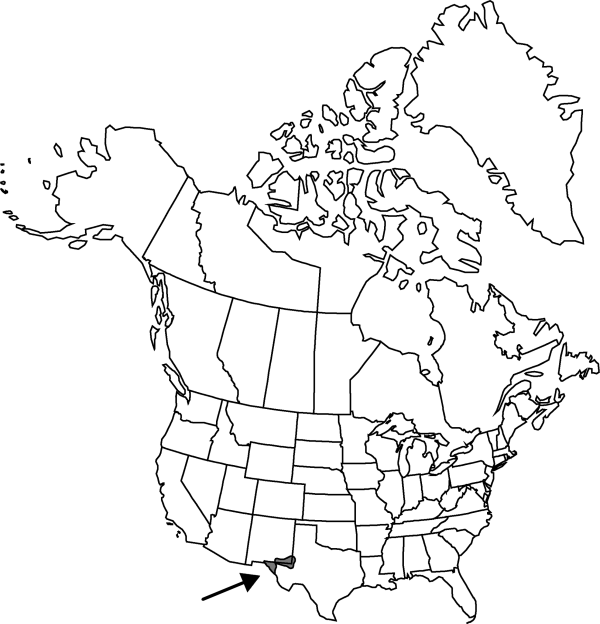Difference between revisions of "Opuntia polyacantha var. arenaria"
Cact. Succ. J. (Los Angeles) 70: 188. 1998.
Common names: Sand pricklypear
Basionym: Opuntia arenaria Engelmann Proc. Amer. Acad. Arts 3: 301. 1856
Treatment appears in FNA Volume 4. Treatment on page 147.
FNA>Volume Importer |
FNA>Volume Importer |
||
| Line 11: | Line 11: | ||
|name=Opuntia arenaria | |name=Opuntia arenaria | ||
|authority=Engelmann | |authority=Engelmann | ||
| + | |rank=species | ||
|publication_title=Proc. Amer. Acad. Arts | |publication_title=Proc. Amer. Acad. Arts | ||
|publication_place=3: 301. 1856 | |publication_place=3: 301. 1856 | ||
| Line 38: | Line 39: | ||
-->{{#Taxon: | -->{{#Taxon: | ||
name=Opuntia polyacantha var. arenaria | name=Opuntia polyacantha var. arenaria | ||
| − | |||
|authority=(Engelmann) B. D. Parfitt | |authority=(Engelmann) B. D. Parfitt | ||
|rank=variety | |rank=variety | ||
| Line 53: | Line 53: | ||
|publication year=1998 | |publication year=1998 | ||
|special status= | |special status= | ||
| − | |source xml=https://jpend@bitbucket.org/aafc-mbb/fna-data-curation.git/src/ | + | |source xml=https://jpend@bitbucket.org/aafc-mbb/fna-data-curation.git/src/f50eec43f223ca0e34566be0b046453a0960e173/coarse_grained_fna_xml/V4/V4_285.xml |
|subfamily=Cactaceae subfam. Opuntioideae | |subfamily=Cactaceae subfam. Opuntioideae | ||
|genus=Opuntia | |genus=Opuntia | ||
Revision as of 21:39, 16 December 2019
Stem segments narrowly obovate, 4–7 × 2–3(–5) cm; areoles 4–6 per diagonal row across midstem segment, 8–11 mm apart. Spines in most areoles, of 2 kinds: major spines 1–3 per areole, only in distal 3–9 areoles, reflexed to porrect, brown, longest 20–40 mm; minor spines 5–7 per areole, strongly deflexed, white, 4–7 mm, except middle one to 14 mm. Fruits slender; areoles 10–14, bearing 3–6 spines, to 8 mm. 2n = 22.
Phenology: Flowering late spring.
Habitat: Sandy barren areas, small dunes
Elevation: 1000-1300 m
Distribution

N.Mex., Tex., Mexico (Chihuahua).
Discussion
Of conservation concern.
Selected References
None.
Lower Taxa
None.